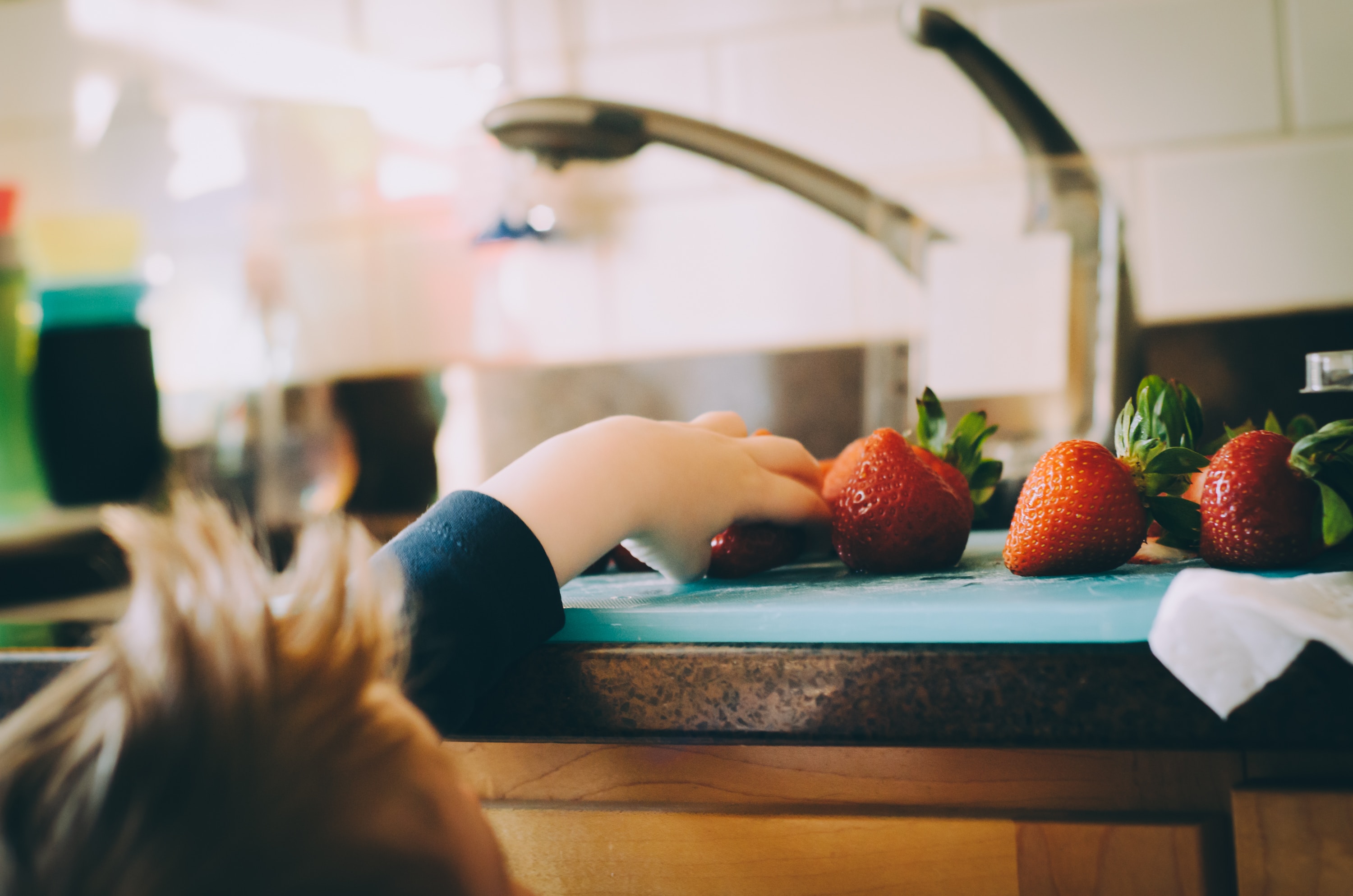How to Make Your Kitchen Kid-friendly

The kitchen is truly the heart of the home. It’s where you make breakfast to kick-start the day, where great memories are made over family dinners and the best place for a midnight snack.
Regardless, there are safety precautions you need to take to steer clear of any dangers for your kids. Your kitchen should be made suitable for the entire family so it can be enjoyed by all. Make your kitchen a safer environment with these tips:
Designate their own space
Give your children some autonomy with their own cabinet space. Keep it low down so they can access it with ease. Start with plastic cups, bowls and cereal so they can make their own breakfast.
Designating their own space will prevent them from climbing up onto the cabinets. Where, firstly, there is a risk of falling. Secondly, they will have access to potential dangers, such as hot appliances.
Use child-safe appliances
Many companies now make child-safe appliances. Insulated ovens that are not hot to the touch from the outside are a popular option. Lockable cabinets, and stove and oven knob covers are also great ideas.
You can even purchase all-in-one taps that dispense both boiling and cold water. Lock the boiling function so that your child will not be able to access it. It will also eliminate the need for a kettle.
Involve your kids
Your kitchen is where the magic happens, so it’s no surprise your kids want to be involved. It’s always great to have a helping hand in the kitchen. Get a step stool for them to reach the countertop and sink. Store this away when not in use, so they do not have access to potential dangers.
Give your children their own jobs where possible. Younger children can stir a mixing bowl, butter bread, wash vegetables and arrange toppings on a pizza. You can also ask them to help find ingredients in the pantry. Ask older children to open cans, crack eggs, peel potatoes and flip pancakes. They may also be willing to read out the recipe.

Reduce the risk
There are plenty of ways to reduce the risk of potentially hazardous situations in the kitchen. Start with keeping dangers out of reach. This includes sharp objects, cleaning products, lighters, spices, alcohol and medicine.
Place rugs or mats on slippery floors and turn pot handles to the back of the stove so your little one cannot pull on them. Replace the hinges in your cabinets with soft-close hinges. This will prevent fingers from getting caught. Choose countertops and tables with curved edges. Otherwise, rubber corner guards will do the trick.
Get into the habit of unplugging the cords of electrical appliances after use. Keep these cords out of reach so they cannot be tugged off the countertop. Ensure you have a working smoke alarm near the kitchen. A fire extinguisher is not a necessity but adds a level of safety to your kitchen.
For young children, set up a baby gate in the entryway of the kitchen. There are now retractable designs available that can be hidden away when not in use.
Establish rules
Establish a set of rules in the kitchen. Teach children which things they should not touch. This includes knives, the hot stovetop, and moving mixer beaters. Instruct them, there are items they may only use with supervision, such as a butter knife and potato peeler.
To give them some autonomy, let them know what they are allowed to handle themselves. Depending on your child’s age, they may be able to pour themselves some cereal and milk or grab themselves a glass of juice.
Showcase good habits
Children are very observant and pick up on what we say and do. Set a good example and showcase good kitchen etiquette.
Always wash your hands before you start handling food. Use oven mitts when handling hot dishes and do not leave out raw meat unrefrigerated for too long. Wash your fruits and vegetables before consumption and clean up spills as soon as they appear.
Follow these tips, and you’re sure to create a safe and kid-friendly kitchen!
About The Author: Maia Fletcher is a Gisborne based freelance writer. She has written for various blogs and home-related businesses such as New Zealand company Poynters. Read more of Maia’s work on her blog.
- Additions and New Construction
- All Exteriors
- Alterations
- Basements
- Bathrooms
- Customer Service
- Customer Stories
- Decks
- Design & Planning Show
- DIY
- Doors
- Educational Resources
- Extreme Makeover Home Edition
- Fashion Show
- General Remodeling
- Green Living
- Handyman Home Services
- Home Decor
- Home Entertainment
- Home Improvement
- Home Improvements
- How to Tips
- In The Community
- Kitchens
- Off-the-Wall Remodeling Stories
- Remodeling
- Resources
- Roofing
- Siding
- Social Media
- Sunrooms
- Tips & Tricks
- Trends
- Windows

